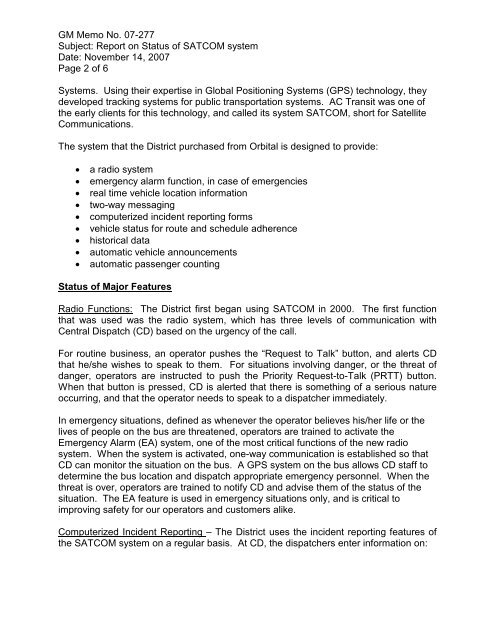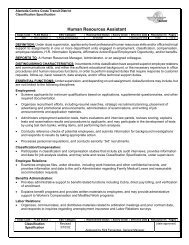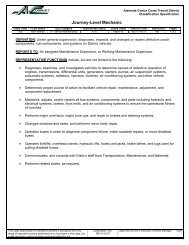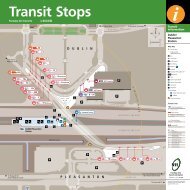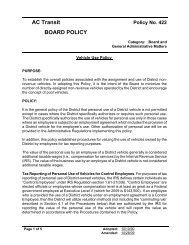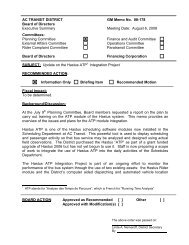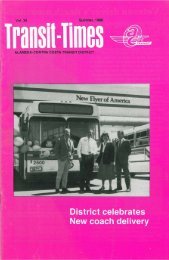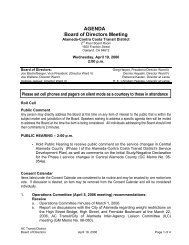GM Memo No. 07-277 - AC Transit
GM Memo No. 07-277 - AC Transit
GM Memo No. 07-277 - AC Transit
You also want an ePaper? Increase the reach of your titles
YUMPU automatically turns print PDFs into web optimized ePapers that Google loves.
<strong>GM</strong> <strong>Memo</strong> <strong>No</strong>. <strong>07</strong>-<strong>277</strong><br />
Subject: Report on Status of SATCOM system<br />
Date: <strong>No</strong>vember 14, 20<strong>07</strong><br />
Page 2 of 6<br />
Systems. Using their expertise in Global Positioning Systems (GPS) technology, they<br />
developed tracking systems for public transportation systems. <strong>AC</strong> <strong>Transit</strong> was one of<br />
the early clients for this technology, and called its system SATCOM, short for Satellite<br />
Communications.<br />
The system that the District purchased from Orbital is designed to provide:<br />
<br />
<br />
<br />
<br />
<br />
<br />
<br />
<br />
<br />
a radio system<br />
emergency alarm function, in case of emergencies<br />
real time vehicle location information<br />
two-way messaging<br />
computerized incident reporting forms<br />
vehicle status for route and schedule adherence<br />
historical data<br />
automatic vehicle announcements<br />
automatic passenger counting<br />
Status of Major Features<br />
Radio Functions: The District first began using SATCOM in 2000. The first function<br />
that was used was the radio system, which has three levels of communication with<br />
Central Dispatch (CD) based on the urgency of the call.<br />
For routine business, an operator pushes the “Request to Talk” button, and alerts CD<br />
that he/she wishes to speak to them. For situations involving danger, or the threat of<br />
danger, operators are instructed to push the Priority Request-to-Talk (PRTT) button.<br />
When that button is pressed, CD is alerted that there is something of a serious nature<br />
occurring, and that the operator needs to speak to a dispatcher immediately.<br />
In emergency situations, defined as whenever the operator believes his/her life or the<br />
lives of people on the bus are threatened, operators are trained to activate the<br />
Emergency Alarm (EA) system, one of the most critical functions of the new radio<br />
system. When the system is activated, one-way communication is established so that<br />
CD can monitor the situation on the bus. A GPS system on the bus allows CD staff to<br />
determine the bus location and dispatch appropriate emergency personnel. When the<br />
threat is over, operators are trained to notify CD and advise them of the status of the<br />
situation. The EA feature is used in emergency situations only, and is critical to<br />
improving safety for our operators and customers alike.<br />
Computerized Incident Reporting – The District uses the incident reporting features of<br />
the SATCOM system on a regular basis. At CD, the dispatchers enter information on:


